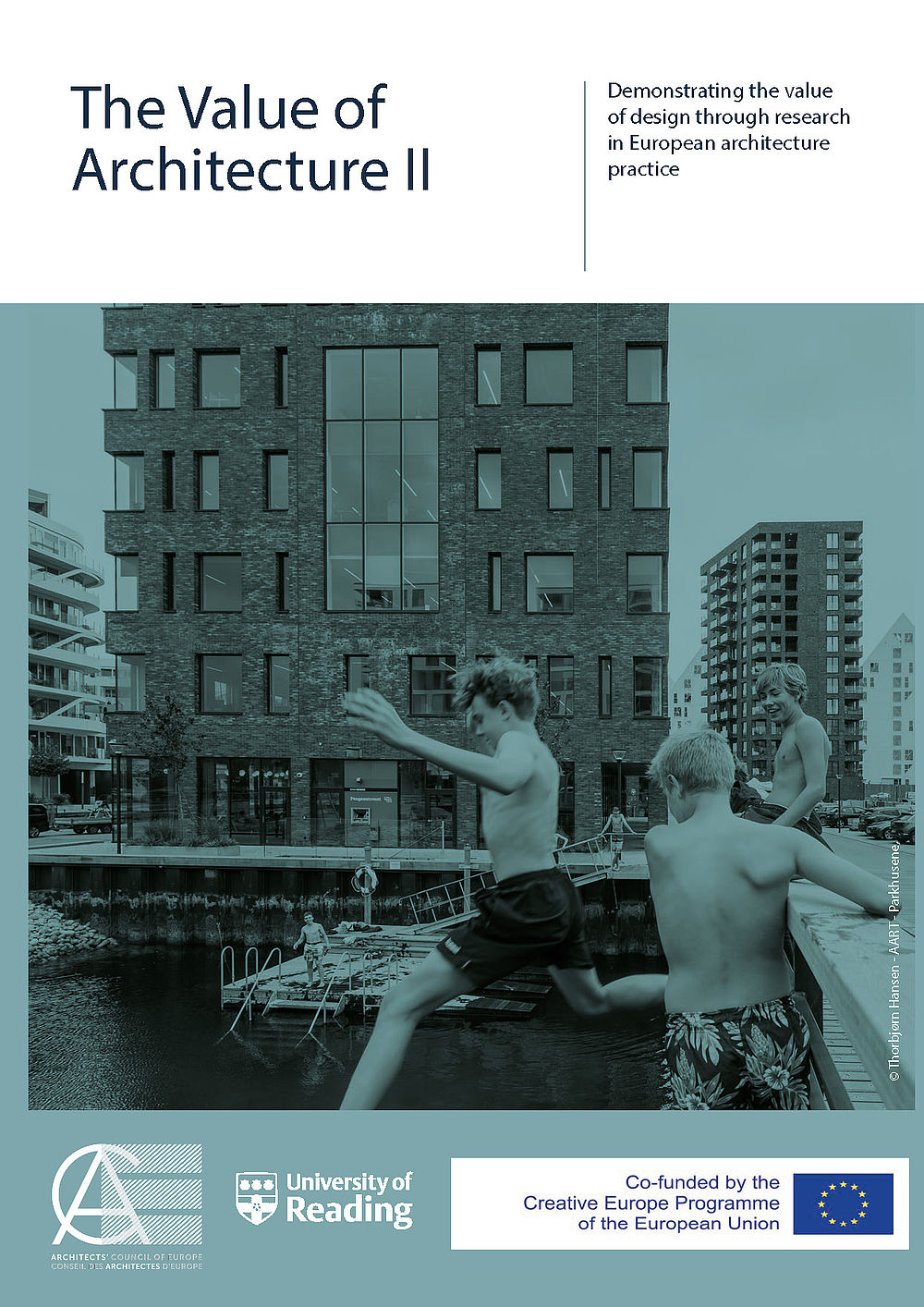
- News
- Publications
- Press releases
- Links
- Contact
- Members area

Demonstrating the value of design through research in European architecture practice
Architects are adept at solving complex built environment problems in creative, inclusive and innovative ways and are therefore well placed to assist with addressing some of the major societal challenges faced by the world today, not least the Climate Change Emergency, and the aftermath of COVID 19. However, they don’t generally think of themselves as researchers and are often excluded from debates about research, research funding and innovation. (Samuel, 2018). Additionally, architects have a communication challenge and need to explain the worth of their work in terms that make sense to decision makers—in particular those who finance it, but also to the general public. Therefore, the focus lies on finding evidence and facts of value created by architectural design and planning that would supplement the compelling visuals and story-telling that architects are good at already. Value is created jointly, requiring many considerations and involving many types of expertise. Solutions must be found that create value at many levels, both for those who use the buildings and the built environment daily, and for society as a whole. The aim of this report is to support the development of research in architectural practice across Europe. Meaning finding suitable tools to document and evaluate the different types of value creation. This will enable architects to demonstrate the value of what they do, diversify their services and become more resilient, whatever the size of practice or the sector that they work in.
The report is in four parts.
Background
In 2018 the Architects’ Council of Europe (ACE) sent out a call for evidence on the Value of Design and the Role of Architects through their network. A review of the evidence submitted pointed to significant gaps in knowledge, in particular on the contribution that architects can make to meeting the triple bottom line of sustainability: social, environmental and economic and in addition cultural value (ACE, 2019), usually evidenced through some kind of Post Occupancy Evaluation. It included an extensive bibliography which has not been replicated here. The evidence was patchy with several European countries entirely unrepresented and it was difficult to find suitable project examples. A set of practical recommendations was included in the first report to help move architectural education, research and practice in the direction of evidencing value. These include the need to develop:
1. The mainstreaming of Post Occupancy Evaluation across the European Profession, as a key tool for architects and their clients to support the quality of future projects and commissions, and identify good practice, as well as economic, environmental, social and cultural value.
2. Regional, national and international networks of architects and academics, to share research knowledge, best practice and expand capacity to undertake research within architectural practice.
3. Strategies to address gaps in knowledge covering all parts of Europe, and all value and project types.
4. Guidance tailored to architects so that they can evidence and communicate design value, through openaccess case studies and research resources.
5. Tools to quantify and monetise design value, for example through Social Return on Investment and Whole Life Costing calculations, so that the long-term economic value of good design is included in procurement, and embedded within public policy.
6. Expanded definitions of architectural practice, to encapsulate the breadth of work and capture the true contribution that architects bring beyond the stereotype. This second report touches upon all six of these strands, but is focused on the first, and arguably most easily actioned of the recommendations, the development of Post Occupancy Evaluation in European architectural practice.
Authors: Rowena Hay, Flora Samuel and Lorraine Farrelly.
Contributors: The authors would like to thank the advisory group including Janeche Bull Borander, Jasper Kraaijeveld, Ian Pritchard, Peter Andreas Sattrup, and Ruth Schagemann. Thanks also to Doina Petrescu, Fionn Stevenson, Judit Kimpian and Veronika Schröpfer. Special thanks to those organisations who generously contributed case studies including 3XN Architects / GXN Innovation, AART, atelier d’architecture autogérée, Bucholz McEvoy / PAC Studio, Kraaijvanger Architects, Library Architecture Unit at the Diputació de Barcelona, VELUX Group and the Wroclaw University of Science and Technology.
Co-funded by the Creative Europe programme of the European Union.
The European Commission support for the production of this publication does not constitute an endorsement of the contents which reflect the view only of the authors, and the Commission cannot be held responsible for any sue which may be made of the information contained therein.
